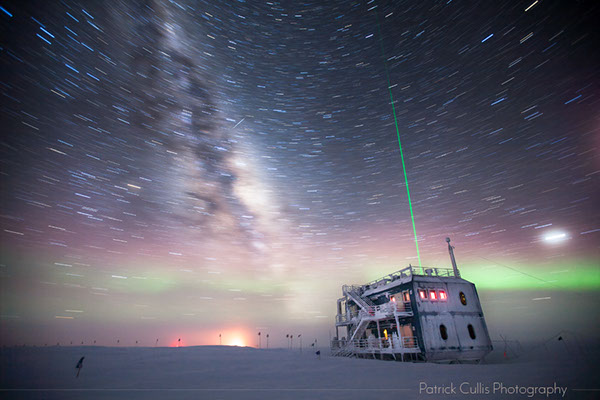
I did not see the Sun for six months from March 20, 2009 to September 22, 2009. I was stationed at the Amundsen-Scott South Pole Station in Antarctica where there is only one sunset, and one sunrise per year because of its location at the southern axis of the Earth. It was under these conditions that I really learned to photograph landscape astrophotography. The South Pole is situated on top of 9,000 feet of snow and ice, with crystal clear skies, and zero light pollution. On the entire collection of buildings there are only a handful of red-filtered light bulbs signaling safety from the frigid temperatures at entrances to buildings. Antarctica is also the largest desert on earth, with only two inches of precipitation falling each year in the form of tiny "diamond dust" ice crystals. It's an astronomers paradise, except for the temperatures. In the winter, the temperatures fall to -100 Fahrenheit and most gear, and humans, weren't built to handle temperatures that extreme. Plastics shatters, grease freezes, oil is viscous, and battery chemistry comes to a halt. But, photographers at the South Pole have had time to work through these issues over the years. You bring a heavy-duty tripod built entirely of metal and take it apart to clean all of the grease out of the heads. Shutter release cables are replaced with Teflon coated wires. Warm, spare batteries are carried everywhere. At least I didn't have to warm my camera back up each time I wanted to advance frozen film and take the next picture...

I didn't know it at first, but having to make the daily quarter mile walk from the main station out to the clean air sector became a serious blessing. It takes time for your eyes to adjust to the dark, and it wasn't until around halfway between the buildings that my eyes would be ready to take in the astronomical views. The Milky Way at the South Pole is incredible, with the central core and Scorpius rising from the horizon. The southern cross overhead with the large and small Magellanic clouds, dwarf galaxies captured by our own Milky Way galaxy, clearly visible and glowing blue with the birth of new stars. It was around this time that I usually realized that what I had assumed was a cloud was in fact an aurora moving across the sky. The South Pole is not actually the best place to be for aurora viewing, with the Earth's magnetic field funneling charged particles in to a "doughnut" centered around the magnetic poles, but thankfully the magnetic pole and geographic pole are offset so we actually ended up positioned on the edge of the doughnut hole.




It was usually at this halfway point when my eyes really began to drink in the incredible sights above me that I would find myself stopping and laying back on the snow to watch the show above me. Temperatures at the South Pole were very strange in how they affected my time outside. Even sitting on two miles of snow and ice, the South Pole is a desert. There is no humidity in the air. It's a dry cold. Heading out in to the night I would put on my Carhartt overalls, thick soled rubber boots, and "big red" Canada goose down coat. On my face I would wear a thick neck gator across my mouth primarily so that I wasn't breathing the frigid air directly in to my lungs, but my eyes were left uncovered. As long as the wind wasn't blowing across it, and the South Pole is generally quite calm, exposed skin actually did pretty well for longer than you would expect. The strangest occurrence that would happen was that random blinks of the eye could cause eyelashes to freeze together. But, most of the heat escaped through direct contact which was through the soles of your boots. I knew it was coming but was always a little surprised by how instantaneous my boots turned in to blocks of supercold rubber. One minute I feel like I could stay outside for hours, and the next I'm stumbling to the nearest building as fast as possible before damage is done. When you entered the buildings, you didn't really have to worry about tracking snow in because any bit of water would evaporate before it could form an actual puddle.



At first I tried a few things to extend the battery life of my cameras while out there, such as building an enclosure or a sweater for the camera, but nothing really worked that well. Hand warmers couldn't overpower the temperature difference, and enclosures tended to vibrate in the wind even more. Plus, it was already hard enough to get your settings right when you had full access to the camera and lens.
I bought my first digital SLR, the Canon 5D a couple months before heading down to the ice. Soon afterward Canon announced the 5D mark ii and I immediately placed a pre-order along with thousands of other photographers. The next day Amazon sent me an email saying they suspected suspicious activity and canceled my pre-order. I contacted Amazon customer support and assured them the order was legitimate but they simply apologized and told me pre-orders were no longer available. To this day, I am still furious...
One of the greatest recent advancements in astrophotography was the implementation of "Live View". Live View is a godsend to achieving proper focus on stars, and is one of the main features missing from the original 5D. Thankfully, I had two amazing L-series lenses that had infinity focus marks and were thermally consistent in the extreme temperatures. I learned pretty well where to set the lens to achieve proper focus on the stars, but I don't know how many series of pictures I deleted in frustration because everything was just out of focus.

It was also during this time that I learned an incredible amount about the moon and orbits just by watching the sky. At the Pole, if there were not buildings to orient yourself with, you would not see any daily cycles in the sky. With the moon remaining in the sky for two weeks at a time, it was easy to watch it speeding away from the Sun during its waxing phase, growing larger as the angle between the two got larger. Then you could watch the waning moon get smaller and smaller as it caught up to the Sun on the other side. During the winter, the six months of darkness were split up in to two week periods of complete dark and two weeks of bright moonlight. With the entire landscape a giant sheet of snow and ice, a full moon might as well be daytime. No headlamps were needed, you could see for miles and miles, and the stars faded back to only the constellation stars and the glow of aurora were mostly overwhelmed. The other two weeks were when it got really good. Without the moon or Sun, it was two straight weeks of just the stars and aurora. The only thing that would get in the way were clouds, but usually that ranged between periods of light opacity to stretches of incredible clarity. I was stationed at the South Pole during 2009 which was during the quiet portion of the 13 year solar cycle and I still got to see some incredible shows in the sky. I would love to go back during a more active period, but I'll probably just arrange a trip up north instead. I thoroughly enjoyed my time on the ice, but I don't foresee myself signing up for another year down there.



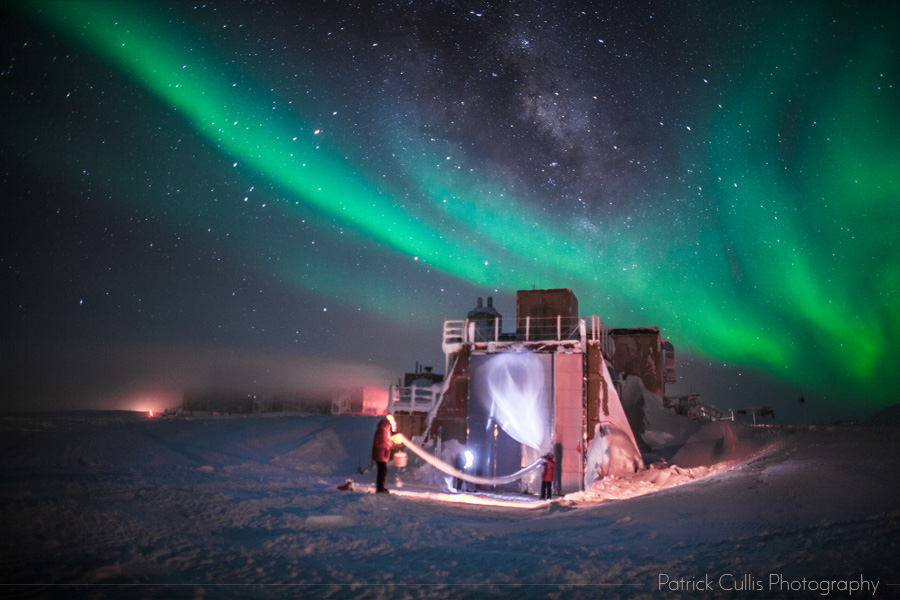


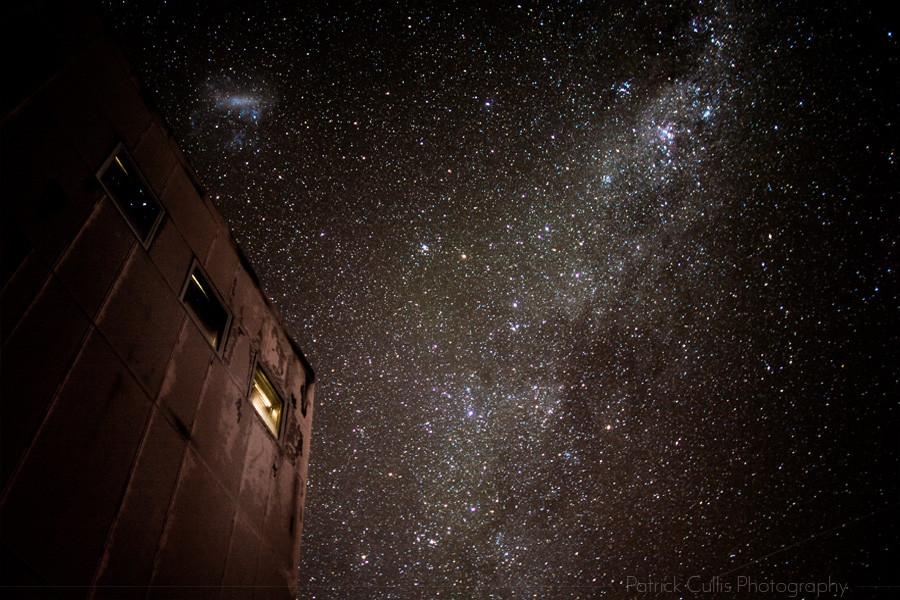

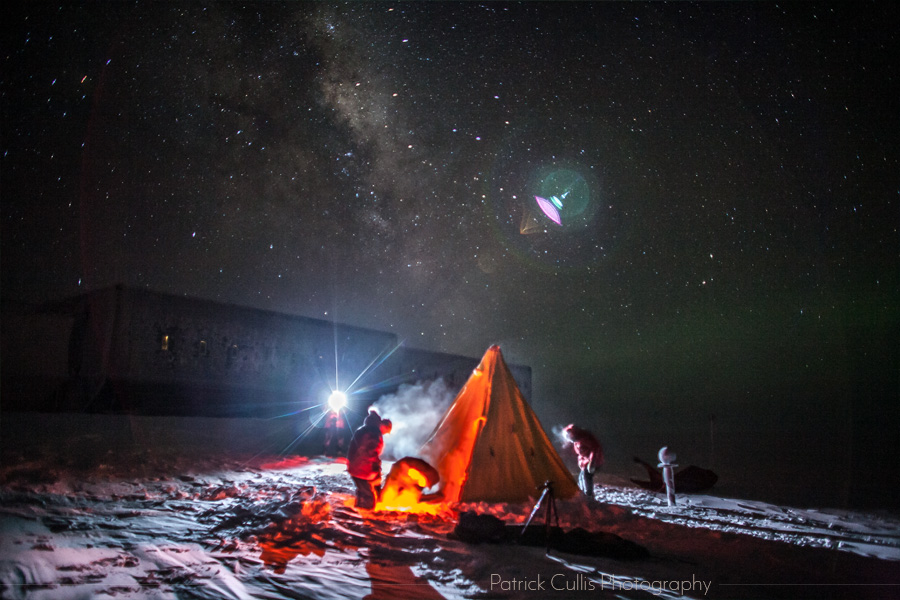
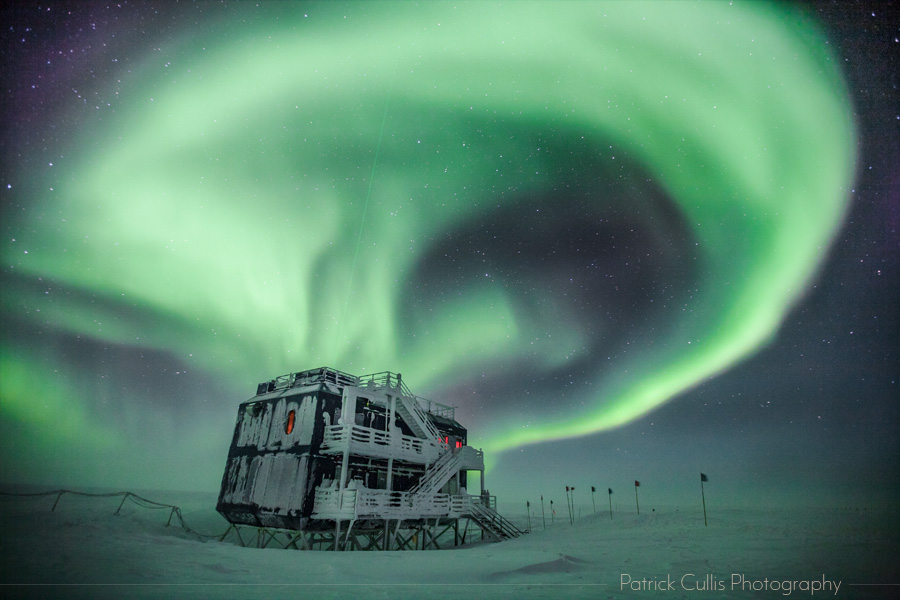
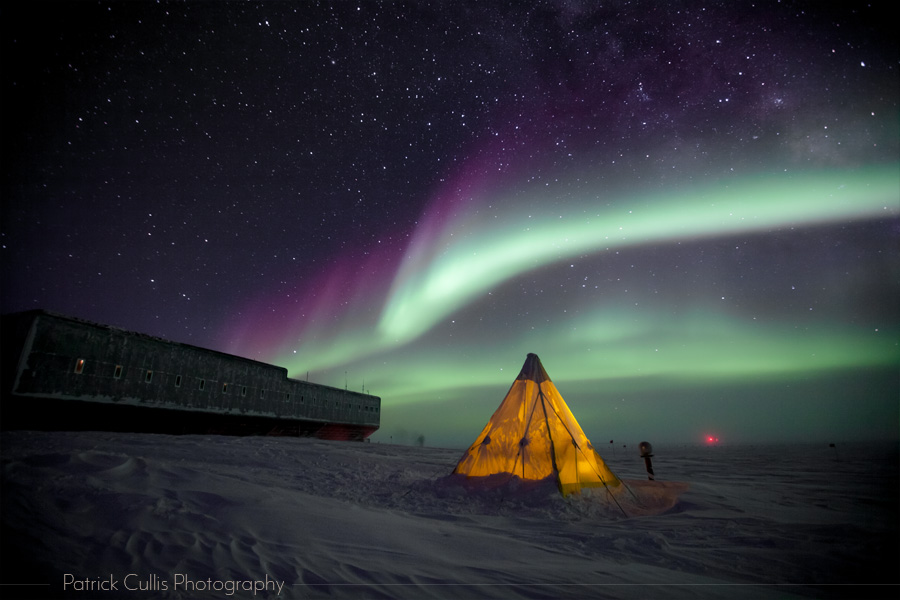
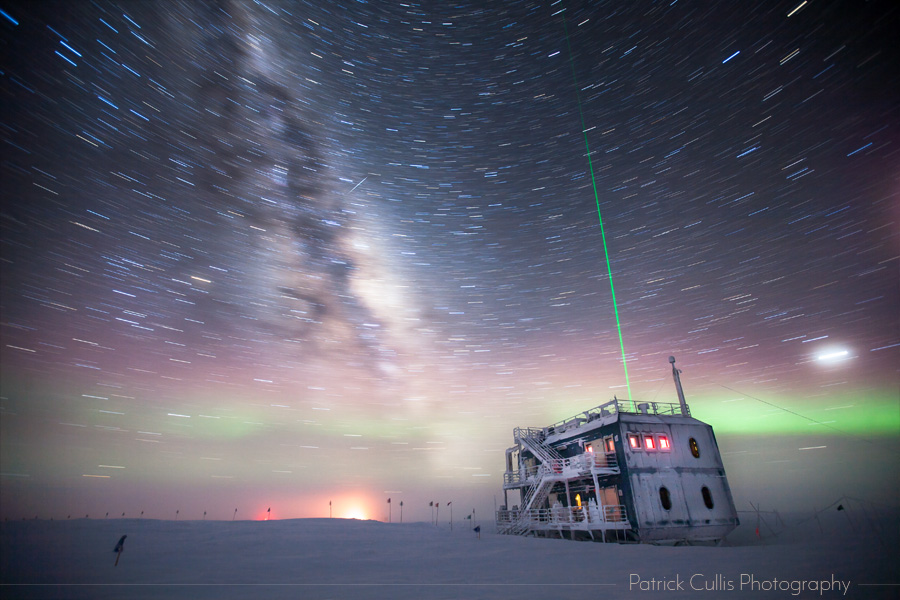
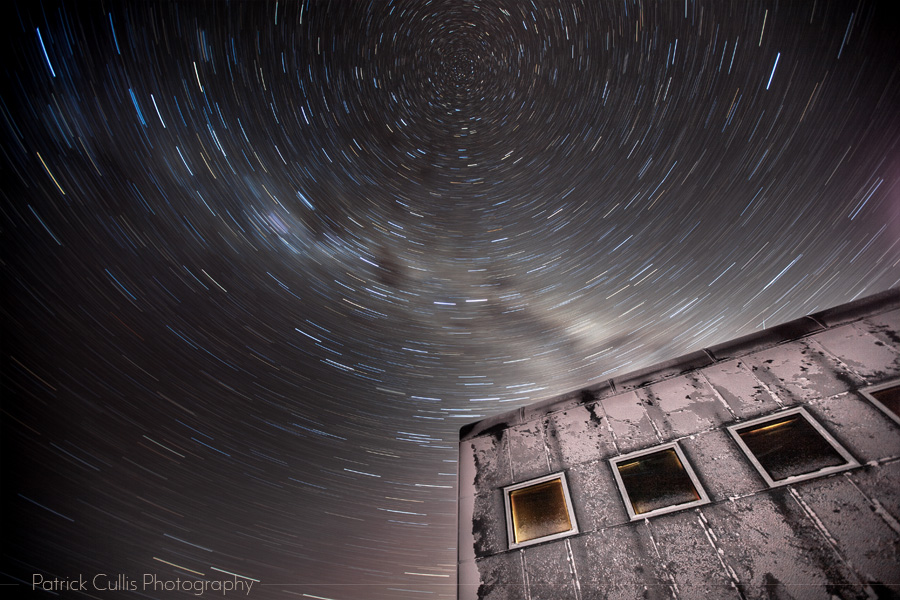
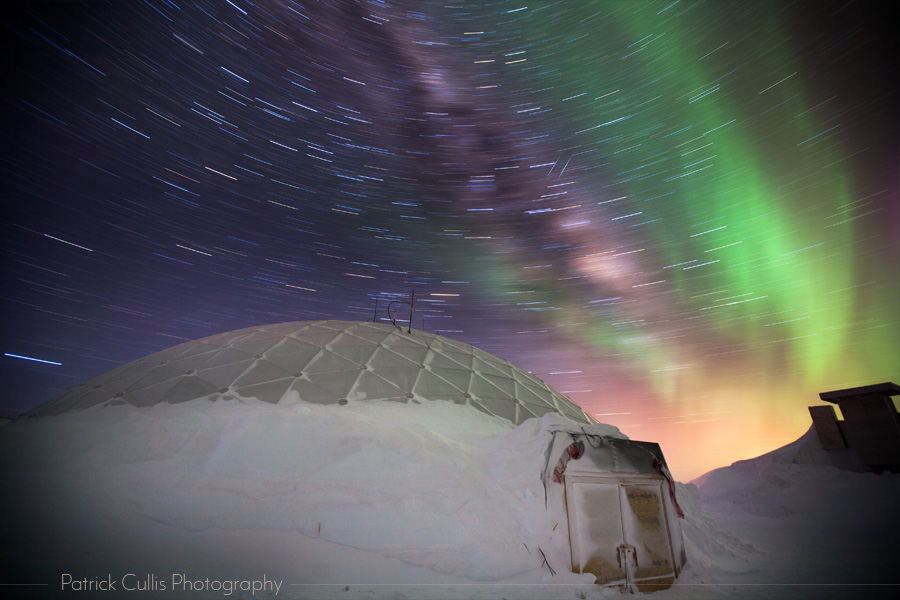



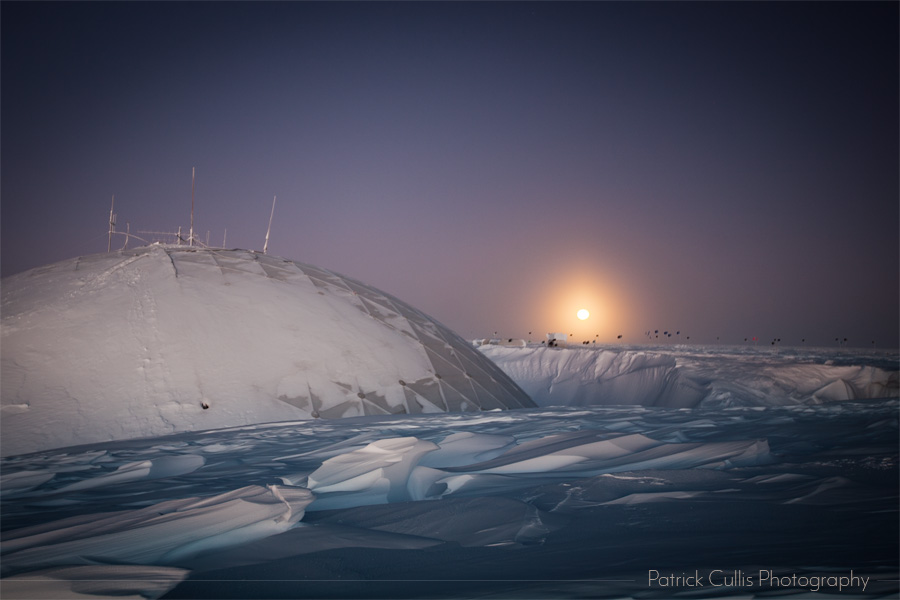
<
>
A Scott Tent set up at the Amundsen-Scott South Pole Station, Antarctica
NSF and NOAA's Atmospheric Research Observatory at the South Pole Station, Antarctica
Moonlight at the Amundsen-Scott South Pole Station, Antarctica
Launching a balloon to measure formation of the Ozone Hole from the Amundsen-Scott South Pole Station, Antarctica
Aurora above the Dome Station, Antarctica
Moonlit self portrait in front of the Dome and Elevated Stations at the South Pole, Antarctica
Night sky above the Amundsen-Scott South Pole Station, Antarctica
Aurora and the Milky Way above the Atmospheric Research Observatory at the South Pole, Antarctica
Setting up the Scott Tent for camping in front of the Amundsen-Scott South Pole Station, Antarctica
Aurora above the Atmospheric Research Observatory at the South Pole, Antarctica
Aurora and a Scott Tent in front of the Amundsen-Scott South Pole Station, Antarctica
Long exposure of the Atmospheric Research Observatory at the South Pole, Antarctica
The southern celestial axis above the Amundsen-Scott South Pole Station, Antarctica
Long exposure with aurora above the Dome Station, Antarctica
A LIDAR pointed near the southern celestial axis in a 15 minute exposure from the South Pole, Antarctica.
The South Pole Telescope and IceCube control building at the Amundsen-Scott South Pole Station, Antarctica
Heavy equipment parked for winter at the Amundsen-Scott South Pole Station, Antarctica
The final full moon to grace the skies above the Dome Station before it was demolished.





























